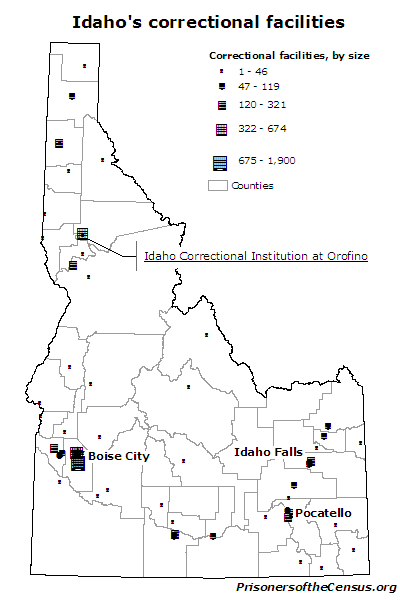NYT: Why Some Politicians Need Their Prisons to Stay Full
by Peter Wagner, December 27, 2004
By Brent Staples
New York Times
December 27, 2004
The mandatory sentencing fad that swept the United States beginning in the 1970’s has had dramatic consequences — most of them bad. The prison population was driven up tenfold, creating a large and growing felon class — now 13 million strong — that remains locked out of the mainstream and prone to recidivism. Trailing behind the legions of felons are children who grow up visiting their parents behind bars and thinking prison life is perfectly normal. Meanwhile, the cost of building and running prisons has pushed many states close to bankruptcy — and forced them to choose between building jails and schools.
Seldom has a public policy done so much damage so quickly. But changes in the draconian sentencing laws have come very slowly. That is partly because the public thinks keeping a large chunk of the population behind bars is responsible for the reduced crime rates of recent years. Studies cast doubt on that theory, since they show drops in crime almost everywhere — even in states that did not embrace mandatory minimum sentences or mass imprisonment. In addition, these damaging policies have done nothing to curb the drug trade.
Changing prison policy, however, is no longer a simple matter. The business of building and running the jailhouse has become a mammoth industry with powerful constituencies that favor the status quo. Prison-based money and political power have distorted the legislative landscape in ways that will be difficult to undo.
These problems are on vivid display in New York, which started mass imprisonment when Gov. Nelson Rockefeller persuaded the Legislature to pass the toughest drug laws in the nation at the start of an ill-starred “war on drugs” 30 years ago. The Rockefeller laws introduced the country to mandatory sentencing policies that barred judges from deciding who goes to jail and for how long. Instead, the laws required lengthy sentences — 15 years to life — for nonviolent, first-time offenders, many of whom would have received brief sentences, drug treatment or community service under previous laws.
Nearly all of the prisoners ended up in upstate New York, where failing farms and hollowed-out cities offered a lot of room for building. Politicians in these sparsely populated districts caught on quickly and began to lobby to have the new prisons located in their communities. As a result, nearly 30 percent of the people who were counted as moving into upstate New York during the 1990’s were prison inmates.
The influx of inmates has brought desperately needed jobs to the region and resulted in districts whose economies revolve around prison payrolls and whose politics are dominated by the union that represents corrections officers. The inmates also helped to save political careers in areas where legislative districts were in danger of having to be merged because of shrinking populations. Inmates, as it turned out, were magically transformed into “residents,” thanks to a quirk in the census rules that counts them as living at their prisons. Although people sentenced under the drug laws frequently serve long sentences, many prisoners remain behind bars only briefly before returning to homes that are often hundreds of miles away.
Felons are barred from voting in 48 of 50 states — including New York. Yet in New York, as in the rest of the country, disenfranchised prisoners are included in the population counts that become the basis for drawing legislative districts.
An eye-opening analysis by Prison Policy Initiative’s Peter Wagner found seven upstate New York Senate districts that meet minimal population requirements only because prison inmates are included in the count. New York is not alone. The group’s researchers have found 21 counties nationally where at least 21 percent of the “residents” were inmates.
The New York Republican Party uses its majority in the State Senate to maintain political power through fat years and lean. The Senate Republicans, in turn, rely on their large upstate delegation to keep that majority. Whether those legislators have consciously made the connection or not, it’s hard to escape the fact that bulging prisons are good for their districts. The advantages extend beyond jobs and political gerrymandering. By counting unemployed inmates as residents, the prison counties lower their per capita incomes — and increase the portion they get of federal funds for the poor. This results in a transfer of federal cash from places that can’t afford to lose it to places that don’t deserve it.
Lately, polls have shown growing support for drug law reform. In November, prominent New York Republicans ran into trouble when they faced candidates who made Rockefeller reform an issue. In response, the State Senate endorsed a plan that cut sentences for drug possession crimes, which was the easy part. But it stonewalled on the crucial change, which would have returned to judges the discretion to sentence at least some offenders to drug treatment instead of prison.
While other political forces support the mandatory sentences — most notably the powerful local prosecutors — prison rights advocates have recently begun to argue that prison district politicians are more concerned about keeping the prisons full than about crime. The idea of counting inmates as voters in the counties that imprison them is particularly repulsive given that inmates are nearly always stripped of the right to vote. The practice recalls the early United States under slavery, when slaves were barred from voting but counted as three-fifths of a person for purposes of apportioning representation in Congress.




